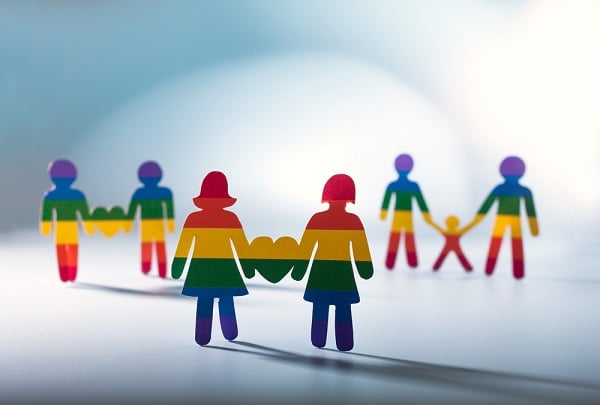 In 2018 just 6 percent of firms reported that they do not offer such coverage—down from 16 percent in 2016. (Photo: Shutterstock)
In 2018 just 6 percent of firms reported that they do not offer such coverage—down from 16 percent in 2016. (Photo: Shutterstock)
Although it has improved, the access that same-sex spouses have to employer-sponsored health insurance (ESI) is still “significantly less common than the offer of opposite sex spousal coverage.”
That's according to a report from the Kaiser Family Foundation, which also finds that in 2018, 63 percent of employers offering health insurance to opposite sex spouses also offered coverage to same-sex spouses, and that the share of employees with such access has increased over time to 88 percent.
 Read more: A tipping point for LGBT policies in the workplace
Read more: A tipping point for LGBT policies in the workplaceThe rise in access follows two Supreme Court rulings (United States v Windsor and Obergerell v Hodges), which changed the legal landscape for same-sex couples. The report adds that although those two decisions “ultimately guarantee[ed] the right to marriage nationwide and paving the way for wider access to health insurance through the workplace,” neither one requires employers to offer such coverage.
In 2016, only 43 percent of firms offering health insurance extend that option to same-sex spouses. The 2018 figure of 63 percent is a substantial improvement, and also in 2018 just 6 percent of firms reported that they do not offer such coverage—down from 16 percent in 2016.
And 31 percent of firms reported they had not encountered this as a benefits issue—with small employers, those with fewer than 200 workers and representing the majority of workers overall (at 98 percent), driving that finding.
The bigger the firm, the more likely it is to offer both opposite- and same-sex spousal coverage. Among large firms—those with more than 200 employees—87 percent are likely to offer such coverage, compared with just 62 percent of smaller firms. Nine percent of large firms did not, and four percent said they had not encountered this benefits issue.
Among the largest firms (those with more than 1,000 workers), 93 percent offered coverage to same-sex spouses, while among small employers of 3–199 workers, only 62 percent did so; 6 percent did not and 32 percent said they had not encountered it.
The majority of firms may be small, but the majority of workers are employed by large firms (those with more than 200 employees). In 2018, among employees who worked at firms offering opposite-sex spousal health benefits, 88 percent also had access to same-sex spousal coverage, the report said. That's a “significant” increase from 2016 and 2017, when it was 84 percent. Six percent did not have access to this benefit, and six percent worked at firms who reported they had not encountered this benefits issue.
And as the largest firms are the ones most commonly offering same-sex spousal benefits, so too are the employees of such firms the most likely to have access to such benefits. The report says that 95 percent of covered workers at large firms who have access to opposite-sex spousal coverage also have access to same-sex spousal coverage. Only five percent didn't, and one percent worked at firms that reported they had not encountered the issue. Among workers at the largest firms (1,000+ workers), nearly all (97 percent) had access to same-sex spousal coverage.
Read more:
© 2025 ALM Global, LLC, All Rights Reserved. Request academic re-use from www.copyright.com. All other uses, submit a request to [email protected]. For more information visit Asset & Logo Licensing.







